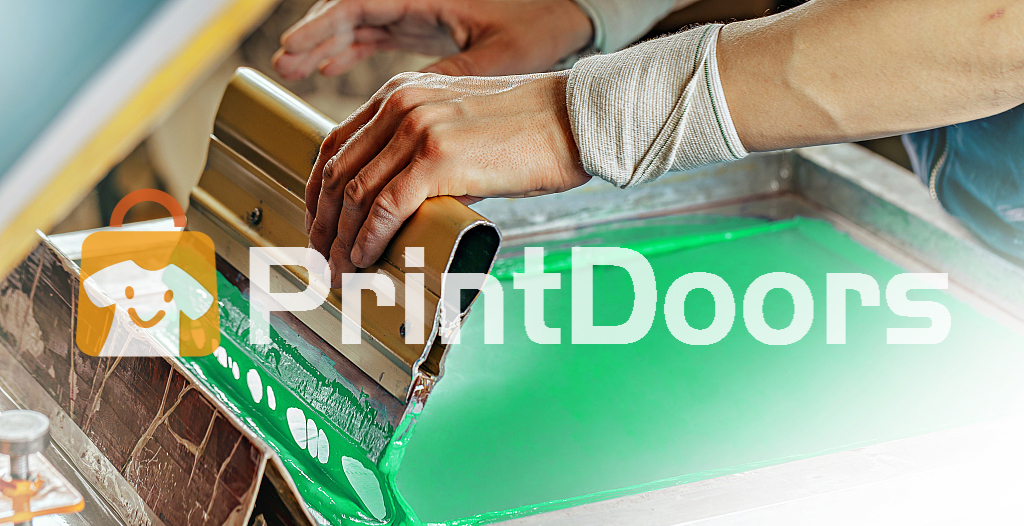Tx Tees Fundamentals Explained
Tx Tees Fundamentals Explained
Blog Article
The Tx Tees Statements
Table of ContentsSome Known Details About Tx Tees Indicators on Tx Tees You Should KnowThe Greatest Guide To Tx TeesThe Best Strategy To Use For Tx TeesNot known Factual Statements About Tx Tees What Does Tx Tees Mean?The Basic Principles Of Tx Tees
Add up various other costs, like the number of utilities it takes to run the shop and the cost of ink and solution per layout. Take the print below.The emulsion needs to only be a few cents because you 'd just need to coat one screen for this work. Just how much should you bill per t-shirt to make a profit? Usually, printers try to make up to 45% earnings on a print job. Here's a table to aid you establish that: complete price per thing percent of preferred profit as a decimal (instance:.25 or.45) earnings made per item per task Currently let's talk regarding the earnings of DTF.

With DTF, you can print a handful of shirts, or simply one. Both screen printing and DTF have their specific niches in the world.
Tx Tees - Truths
The most effective means to understand? Ask around and see what print shops like yours are doing. t-shirt printing. Try both out and see which you like much better
When you're picking what sort of printing technique to use for printing your artwork styles on your garments, it is essential that you understand the distinctions in between these two methods so you can maximize outcomes while minimizing costs. Screen printing is one of the most commonly made use of method for printing designs on fabrics.
DTG printing is additionally recognized as spot or straight to garment printing since it publishes only what is required rather than making a display as screen printers do. https://medium.com/@russellcostello79602/about. Screen printing functions by display filler squeegee display printing ink display mesh screen, after that transferring the picture to garment utilizing warmth and/or stress
The DTG printer makes use of unique dye-sublimation inks that are applied right into a pre-designed image by an electronic printing system. The inks enter into the material, enabling vibrant shades and extraordinary information. It's also recognized as spot or direct to garment printing because it publishes just what is needed instead of making a screen as display printers do.
The Main Principles Of Tx Tees
It's much faster - you can publish a fullcolor image in mins, as opposed to hours for screen printing. Second, there's no established time or expenses involved - you can print any design you like, without needing to create a screen initially. Third, there's no waste - because display printers screen print one design at a time, they have to evaluate each shade separately.
The paper is really costly and can only be made use of once. Once it's printed on, it has actually to be thrown out. - The initial purchase cost is reduced than the upfront financial investment of DTG printers- You can print multi-color styles one screen each time rather of needing to publish each shade separately like DTG printing.

Some Ideas on Tx Tees You Need To Know
Rather of making use of screen mesh as display printers do, dye sublimation printers use laser innovation to move your pictures onto garments or paper. A warmth procedure transfers the dye from its solid-state directly right into the gas stage which in turn merges it onto material substrates when they are swiftly heated to high temperature levels under high pressure.
Sublimation printing is environment-friendly. It utilizes less water than screenprinting, and due to the fact that it does not include making use of harmful solvents, it's safe for all kinds of apparel. The color sublimation inks are additionally odor-free when cured, unlike screen printers that make use of damaging chemicals throughout the display printing procedure that leave behind an undesirable odor.
They likewise conserve money on expensive tools like exposure units given that dye sublimation printers do not need a UV exposure unit or a flash cure stove that is normally utilized in display printing (t-shirt printing). What is direct to garment printing (DTG Printing)? DTG printing is a digital screenprinting procedure that prints directly onto textile using specialized inkjet printers
The Best Guide To Tx Tees
DTG printing offers many benefits over traditional screenprinting, consisting of the capacity to print photo high quality images, greater shade vibrancy, and the capacity to publish layouts on darker textiles. DTG printers work by heating up the textile ink up until it develops into a gas. The gas then penetrates the material, bonding with the fibers to produce a permanent print.

Display printers just prepare their screen after that begin printing until they run out of product or ink.- There is a vast array of experienced screen printers all over the world, which can be helpful for novices. - It's a slower process - display printers often need to wait on the ink to dry before they can publish the next color- Screen printers need manual labor, so there's a greater discovering contour and it takes longer to produce a premium design- Display printing isn't as precise as DTG printing, so you may obtain some "blood loss" of shades from one component of the picture onto one more if not done correctly.
Facts About Tx Tees Revealed
Nevertheless, instead of utilizing screen mesh as display printers do, dye sublimation printers use laser modern technology to transfer your pictures onto garments or paper. A warmth procedure moves the color from its solid-state directly into the gas stage which subsequently integrates it onto fabric substratums when they are rapidly heated up to high temperature levels under high pressure.
Sublimation printing is green. It utilizes much less water than screenprinting, and because it doesn't involve using unsafe embroidery shop solvents, it's secure for all sorts of apparel. The color sublimation inks are likewise odorless when healed, unlike screen printers that use damaging chemicals throughout the display printing process that leave an unpleasant odor.
They additionally save money on pricey tools like direct exposure systems since color sublimation printers do not need a UV exposure system or a flash treatment oven that is normally utilized in screen printing. What is straight to garment printing (DTG Printing)? DTG printing is an electronic screenprinting procedure that prints directly onto fabric using specialized inkjet printers.
Getting My Tx Tees To Work
DTG printing offers several benefits over conventional screenprinting, including the capability to print photographic top quality images, better shade vibrancy, and the capability to print layouts on darker fabrics. DTG printers function by heating the textile ink up until it becomes a gas. The gas then permeates the material, bonding with the fibers to produce an irreversible print.
Report this page